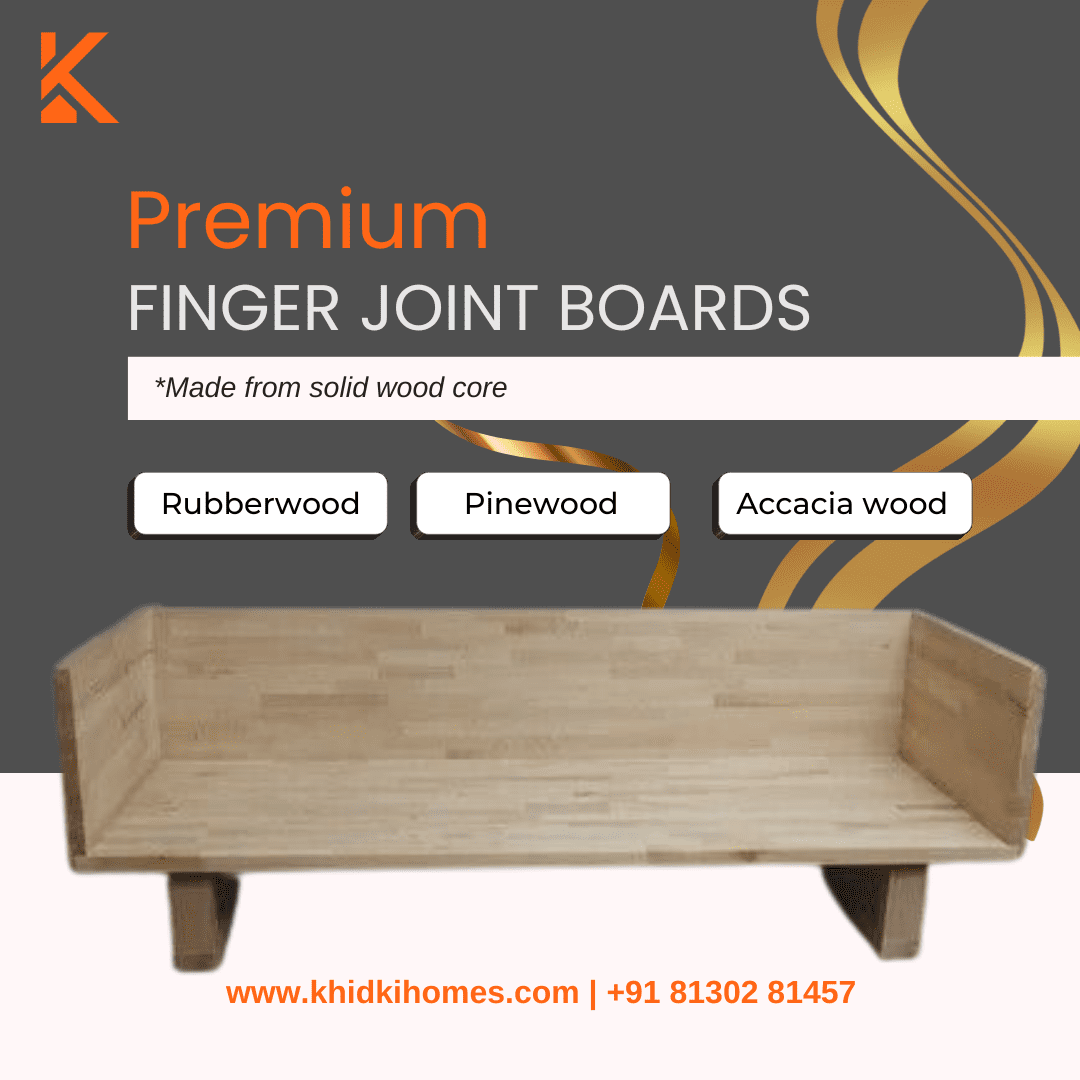Introduction
Finger joint boards are an essential component in the realm of woodworking, prized for their versatility, strength, and aesthetic appeal. In this blog, we delve into the intricacies of finger joint boards, exploring their applications and various types to help you better understand their uses and benefits.

Understanding Finger Joint Boards
Finger joint boards, also known as box joint boards or comb joint boards, are engineered wood products created by joining multiple smaller pieces of wood together using interlocking fingers or teeth. These fingers are precisely machined to fit together snugly, creating a seamless and robust connection.
Applications of Finger Joint Boards
Furniture Construction: Finger joint boards are extensively used in furniture manufacturing, particularly for constructing tabletops, cabinets, drawers, and shelving units. Their dimensional stability and strength make them ideal for bearing heavy loads and resisting warping or twisting over time.
Trim and Molding: Finger joint boards are also popular choices for trim and molding applications. They can be molded into various profiles and shapes to add decorative accents to doors, windows, baseboards, and other architectural elements.
Flooring: In the realm of flooring, finger joint boards are prized for their durability and resistance to moisture and temperature fluctuations. They provide a stable and long-lasting foundation for hardwood and engineered wood flooring installations.
Door and Window Frames: Finger joint boards are commonly utilized in the construction of door and window frames due to their structural integrity and ability to withstand external elements. They provide a reliable framework for installing doors, windows, and other fixtures.
Types of Finger Joint Boards
Softwood Finger Joint Boards: These boards are typically made from softwood species such as pine, spruce, or cedar. They are suitable for indoor applications and are often used in furniture construction and trim work.
Hardwood Finger Joint Boards: Hardwood finger joint boards are crafted from hardwood species like oak, maple, or cherry. They offer superior strength and durability, making them ideal for high-traffic areas and outdoor projects.
Exterior Grade Finger Joint Boards: These boards are specially treated and coated to withstand outdoor conditions, including exposure to moisture, sunlight, and insects. They are commonly used in outdoor furniture, decking, and siding installations.
Paint-Grade Finger Joint Boards: Paint-grade finger joint boards feature a smooth surface finish that is ideal for painting or staining. They are commonly used in interior trim and molding applications where a flawless finish is desired.
Conclusion
Finger joint boards are versatile and durable building materials that find applications across various industries, from furniture manufacturing to architectural design. With their exceptional strength, dimensional stability, and aesthetic appeal, finger joint boards continue to be a preferred choice for craftsmen, builders, and homeowners alike. Whether you're embarking on a DIY project or a large-scale construction endeavor, consider incorporating finger joint boards for reliable and long-lasting results.






